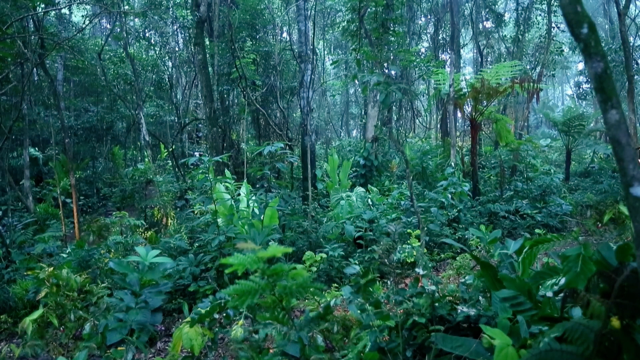
— Log in to watch the artist video if you have been given an access
- Artist
- Sara Ramo
- Title
- Os Ajudantes
- Year
- 2015
- Duration
- 19 min 26 s
- Format & Technical
Single channel, loop, video HD, colour, sound
5
In the Western tradition of the Enlightenment, darkness is an uncomfortable place. The lack of visibility and of clarity is associated with the absence of knowledge, with the monstrous, with the hidden, and with those states of humanity closest to bestiality. It is the witching hour, a time of danger and helplessness. All cats are black at night, which in Spanish popular wisdom belongs to wolves and thieves.
What can we find, then, in this nocturnal scene, the shadowy state presented by Sara Ramo in her video Os Ajudantes (The Helpers)? What kind of help is offered? We distinguish three elements which barely serve to help build a narrative, and which place us in a dreamlike atmosphere: bonfires that allow us to catch a glimpse of something; people in masks who enter and exit the frame in a seemingly senseless stroll; and the music that they play, which we are unable to associate with any other recognisable melody from classic tunes. In this way, the hidden and indiscernible, the masks and the sounds, force us to press our abilities of perception and attention, as well as to question our possible analyses. When the light surges, though just for an instant, nature appears noisier and more exuberant, only to return again to a state of semi-darkness.
The veiled and revealed, that which has appeared and disappeared, as a path for new cognitive directions, was the main theme of Bill Viola’s video The Reflecting Pool from 1977-79. Immersed in the study of Oriental philosophies and searching for techniques of spiritual and mental expansion, new video techniques allowed Viola to experiment with the image, its repetition and its absence to create stimuli that led the viewer into meditative states.
In both the works of Ramo and of Viola, nature is the framework for action, and we identify the intention to present unique contexts which serve to widen perception through ritual actions. However, the four decades that separate the works place Sara Ramo in a different political circumstance: the cognitive act leaves the sphere of the individual to become, through new anthropological theories, a fundamental element in socio-political configuration.
The spirits of the wilderness are key to the social structure of Brazilian indigenous communities, source of knowledge for anthropologist Eduardo Viveiros de Castro. The mask does not hide, music does not represent, and nature, which is savage for the West, has been diverted by culture. This nature would then be a new place for new cognitive forms. And so, their metaphorical representation in Ramo’s work invites us to ask ourselves about these other places, these other mythologies and ontologies which allow us to rethink ourselves as individuals in relation to the other as a social being—a relationship symbolically articulated through the rite, which never ceases to be a political staging.
Marta Ramos-Yzquierdo
Stills





